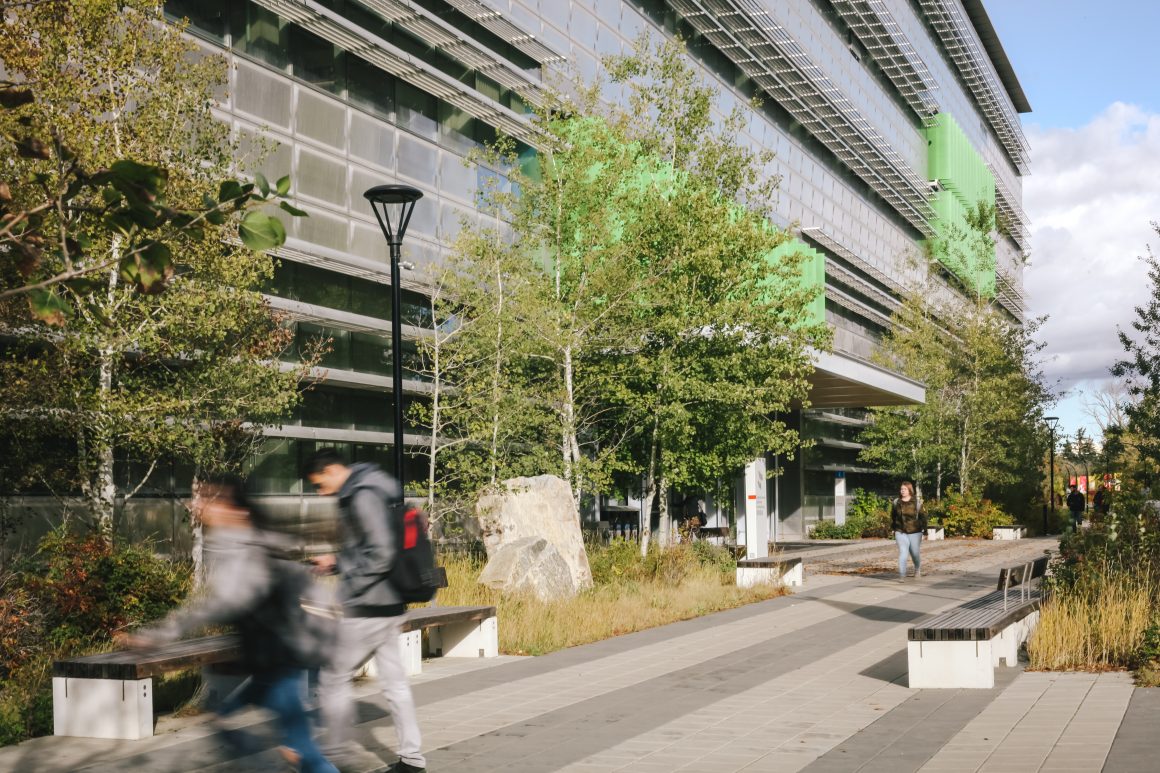
U of C meets greenhouse gas emissions reduction goal decade ahead of schedule
By Russell Glenn, October 3 2018 —
The University of Calgary has reduced its greenhouse gas emissions by 30 per cent since 2008, reaching the Government of Canada’s goal for emission reduction more than a decade before the national target of 2028.
According to a UToday article, the reduction is equivalent to 69,000 tonnes of carbon dioxide annually — roughly the same as the energy generated by 17 wind turbines in a year. Currently, the U of C’s annual carbon footprint is roughly 165,000 tonnes of carbon-dioxide equivalents, the equivalent of the energy use of 17,800 homes in a year.
“Sustainability has been a core value of the university since the inception of our Eyes High strategy and is a driver for investments made across the institution,” said Joanne Perdue, the U of C’s chief sustainability officer, in an email statement to the Gauntlet. “The University of Calgary’s 2010 Climate Action Plan (CAP) identified strategies for achieving institutional greenhouse gas emission reduction targets that were aligned with leading universities and municipalities across North America.”
The national target comes from the 2015 Paris Agreement — which Canada is a signatory of — that sets a 30-per-cent reduction target in greenhouse gas emissions from 2005 levels by 2028. The U of C’s 2010 CAP also lays out a further reduction target of 80 per cent by 2050.
One strategy adopted by the university as part of CAP is the 2012 installation of an on-campus cogeneration plant, which uses hot exhaust gasses released during the production of electricity to heat water to 205 C. The water is then pumped to buildings across campus, where it is used for space-heating and hot water.
Since 2011, the U of C has also invested in greater energy efficiencies in existing buildings through two programs: the Energy Savings Initiative (ESI) and the Utility Reductions Program (URPr). Since their introduction, building upgrades like retrofitting light fixtures with LED bulbs, optimization of heating, ventilation and air conditioning, and updating building control systems have all contributed to the reduction in campus emissions.
“These actions have been strategically planned and intentional,” Purdue said about initiatives such as the ESI and URPr. “This, together with the support from the university community, enabled us to recently reach the Government of Canada’s 2030 target to reduce Canadian greenhouse gas (GHG) emissions by 30 per cent from 2005 levels by 2018.”
One visible part of the university’s climate initiatives is the redevelopment of MacKimmie Tower and Block. Part of the purpose of the project is to attain net carbon neutrality for the building, and to reduce the building’s energy use by 90 per cent.
Becoming a low-carbon campus has not come without hiccups. The original 2010 CAP set a more ambitious target of a 49 per cent of reduction in emissions from 2008 levels by 2015 — a reduction that has yet to be achieved three years after the target date. The CAP’s next goal is a 56 per cent reduction by 2020.
According to a report from the Lawrence National Centre for Policy and Management at Western University, Canada is still a top-10 global emitter of greenhouse gasses per capita. The degree of commitment for reduction also varies by province. For example, Alberta’s 2013 greenhouse gas emissions totalled to 2,670 megatonnes, compared to Manitoba’s 21.4 megatonnes. And according to the same report, Canada would still require a greenhouse gas emissions reduction of 45 megatonnes in 2020 and a further 55 megatonnes in 2030 to meet the country’s Paris Agreement commitments.
